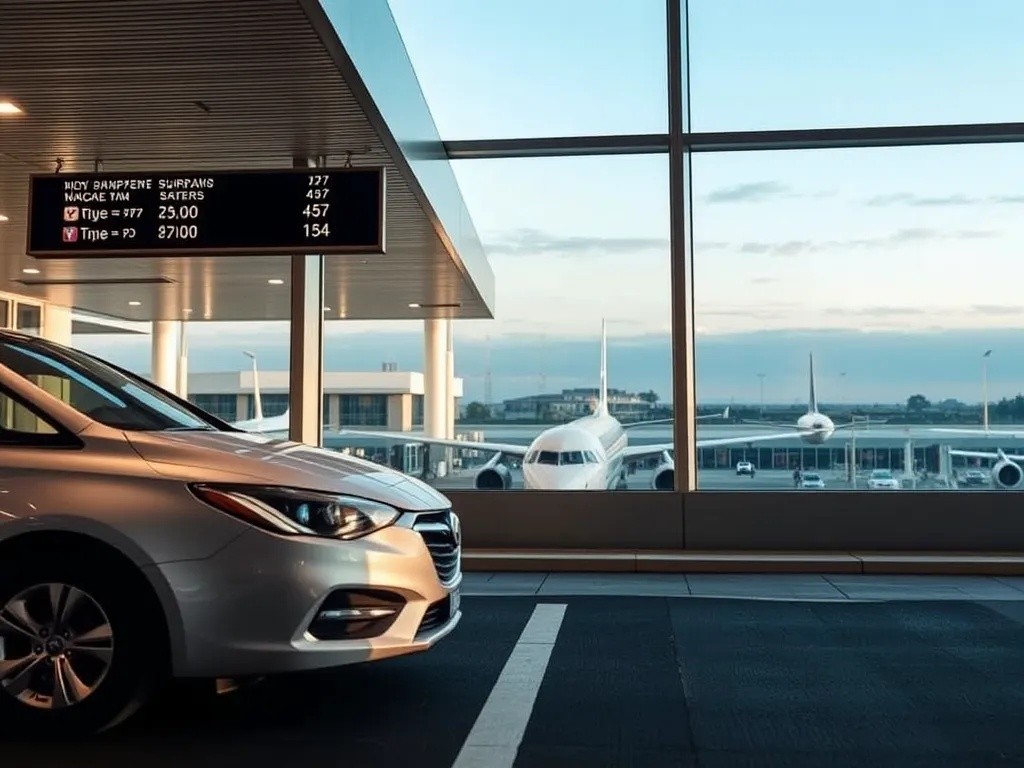- St. Petersburg, Polyustrovsky Prospekt 32
- booking@extrip.su

When planning travel, many visitors face a common dilemma: rent a car at the airport upon arrival or seek alternatives in downtown locations. The price difference can be substantial, often ranging from 20% to 50% more at airport locations. Understanding the factors behind this pricing disparity can help travelers make informed decisions and potentially save significant money on their car rental expenses.
The Convenience Premium: Location Matters
Airport car rental locations command higher prices primarily due to their strategic positioning. These facilities offer unmatched convenience for travelers who want immediate access to transportation upon landing. This convenience comes at a premium, as rental companies capitalize on the captive audience of tired travelers who prioritize ease over cost comparison.
Immediate Accessibility
Airport rental counters are typically located within or adjacent to terminal buildings, allowing customers to complete their rental process without additional transportation. This seamless transition from flight to rental car eliminates the need for shuttle buses, taxis, or public transportation to reach off-site locations.
Time-Sensitive Decision Making
Travelers at airports often make rental decisions under time pressure, especially when dealing with flight delays, missed connections, or unexpected travel changes. This urgency reduces price sensitivity and increases the likelihood of accepting higher rates without extensive comparison shopping.
Hidden Costs and Additional Fees
Airport car rentals frequently include fees that downtown locations either don't charge or charge at lower rates. These additional costs significantly impact the total rental expense.
Airport Concession Fees
Most airports charge car rental companies concession fees for operating on airport property. These fees, typically ranging from 8% to 15% of the rental cost, are passed directly to consumers. The fees compensate airports for providing space, utilities, and access to their customer base.
Facility Charges
Many airport locations impose customer facility charges (CFCs) to fund the construction and maintenance of rental car facilities. These charges can add $2 to $8 per day to rental costs, depending on the airport and local regulations.
Transportation and Shuttle Fees
Some airports require rental companies to operate from off-site locations, necessitating shuttle services between terminals and rental facilities. The cost of these shuttle operations is factored into rental prices, contributing to higher overall costs.

Market Dynamics and Competition
The competitive landscape at airports differs significantly from downtown markets, influencing pricing strategies and customer options.
Limited Competition
Airports typically restrict the number of car rental companies that can operate on their premises. This limited competition reduces price pressure and allows established operators to maintain higher rates without fear of being significantly undercut by competitors.
Controlled Environment
Airport rental locations operate within a controlled environment where customer acquisition costs are lower. Unlike downtown locations that must invest heavily in advertising and marketing to attract customers, airport locations benefit from a steady stream of travelers who need rental cars.
Operational Costs and Infrastructure
Running a car rental operation at an airport involves unique costs that don't affect downtown locations.
Security and Compliance Requirements
Airport locations must comply with strict security protocols, including:
- Background checks for all employees
- Regular security screenings and training
- Specialized insurance coverage for airport operations
- Compliance with federal aviation regulations
Premium Real Estate Costs
Airport property commands premium lease rates due to high demand and limited availability. These elevated real estate costs are reflected in rental prices, as companies must maintain profitable margins while operating in expensive locations.

Fleet Management Challenges
Airport locations face unique fleet management challenges that increase operational costs.
Peak Demand Fluctuations
Airport rental locations experience dramatic demand fluctuations based on flight schedules, seasonal travel patterns, and weather disruptions. Managing inventory to meet these unpredictable demand spikes requires maintaining larger fleets and more complex logistics operations.
Vehicle Positioning and Transportation
Moving vehicles between airport and off-site facilities incurs significant costs. These logistics expenses, including fuel, labor, and time, are incorporated into rental pricing structures.
Downtown Alternatives: Why They're Cheaper
Downtown car rental locations offer several cost advantages that allow them to provide more competitive pricing.
Lower Overhead Costs
Downtown locations typically have lower lease costs, reduced security requirements, and fewer regulatory compliance obligations. These operational savings can be passed on to customers through lower rental rates.
Flexible Business Models
Many downtown locations operate with more flexible business models, including partnerships with hotels, extended operating hours, and diverse customer acquisition strategies that help reduce per-customer costs.
Strategies for Cost-Conscious Travelers
Understanding the cost structure of airport versus downtown rentals enables travelers to make strategic decisions.
Planning Ahead
Travelers with flexible schedules can research downtown alternatives before their trip. Many cities offer rental locations near public transportation hubs, making them accessible without expensive taxi rides.
Total Cost Analysis
When comparing options, consider the total cost including transportation to downtown locations, time investment, and potential inconvenience. Sometimes the airport premium is justified by the value of time and convenience.
Conclusion
Airport car rentals cost more than downtown options due to a combination of convenience premiums, additional fees, operational challenges, and market dynamics. While these higher costs can be frustrating for budget-conscious travelers, they reflect the genuine additional expenses and value proposition of airport locations. By understanding these factors, travelers can make informed decisions that balance cost considerations with their specific needs and circumstances. Whether choosing airport convenience or downtown savings, awareness of pricing factors helps ensure the best value for your travel budget.
